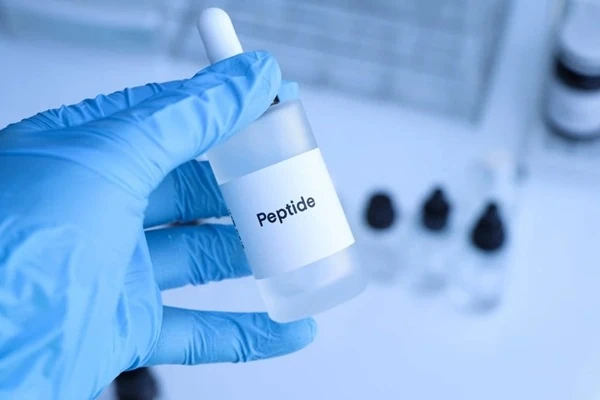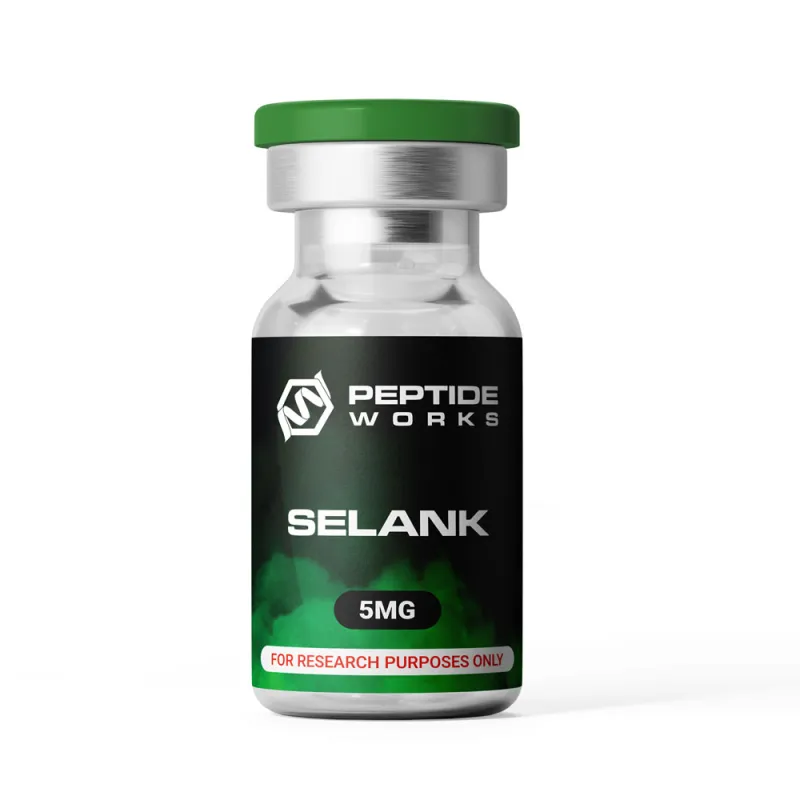
PROMO!
First order? Get 10% OFF with this code: 1storder
Written by

In the field of nootropic peptides, Adamax and Semax continue to attract strong attention from researchers studying brain health and cognitive enhancement. Both compounds share similar peptide origins, yet subtle changes in their structure lead to noticeably different properties during laboratory testing.
Semax is recognized for its potential role in supporting BDNF activity, which helps regulate learning, focus, and memory formation. Adamax, on the other hand, builds on that foundation with refined molecular modifications that may improve stability, solubility, and overall durability in research conditions.
This article explores how Adamax and Semax differ in structure, mechanism, and design, while also highlighting how related peptides such as Selank contribute to the growing study of neuroprotection and cognitive pathways.
Understanding how molecular differences translate into distinct neural effects allows researchers to examine their influence on brain signaling and performance more closely.
Explore Adamax from Peptide Works, a refined peptide designed for advanced research on neural stability, receptor interaction, and cognitive signal regulation.

Small molecular differences between Adamax and Semax create distinct effects on the brain. Semax is recognized for influencing BDNF signaling, which supports neuroplasticity, focus, and memory formation. Research shows it can regulate dopamine and serotonin pathways, helping maintain cognitive balance and promoting efficient neural communication. Its structure also contributes to measurable neuroprotective activity related to learning and adaptation.
Adamax and Semax differ mainly in their chemical composition. Adamax contains acetyl and adamantane-like groups that enhance stability, solubility, and lipid permeability.
These modifications may change how it interacts with neural receptors and how long it remains active. Such molecular adjustments appear to improve pathway signaling efficiency, offering deeper insight into peptide-based modulation of brain activity.
These molecular distinctions have practical implications, especially when examining how Semax supports key neurological processes such as learning and synaptic adaptation.
Semax enhances neuroplasticity by improving synaptic signaling and supporting adaptive changes within neural circuits. Research shows it activates BDNF and TrkB pathways, which strengthen synaptic connections linked to learning and memory formation. Semax also influences glutamatergic transmission, helping neurons communicate more efficiently and form long-term memory traces in experimental models.
Because Adamax and Semax share a similar peptide backbone, the neural effects of Semax provide valuable insight into how small structural adjustments can influence cognitive function. These findings suggest that optimizing neuroplasticity through BDNF activation and synaptic modulation remains one of the most promising research areas for understanding how peptides may support learning efficiency and mental adaptability.
Beyond its effects on learning, Semax demonstrates potential benefits for protecting neurons and supporting recovery after neurological stress or injury.

Semax promotes brain resilience by protecting neurons from oxidative and inflammatory stress. Studies show it reduces infarct size in ischemic brain models and restores learning and motor performance by activating genes that regulate neurotrophins, neurotransmitters, and antioxidant defenses. These effects strengthen neural circuits and improve the brain’s ability to recover from fatigue or damage.
Because Adamax and Semax share a similar peptide structure, findings on Semax highlight how these compounds may influence neuroprotective pathways. By stabilizing neural activity and supporting gene expression linked to repair, Semax may strengthen the brain’s natural recovery systems and sustain cognitive performance offering researchers valuable insight into adaptive brain function and neural resilience.
While Semax shows promising neuroprotective activity, Adamax offers additional insights into how structural optimization can further stabilize neural communication and cognitive control.
Discover Semax from Peptide Works, a nootropic peptide studied for its role in enhancing BDNF activity, neuroplasticity, and memory-related brain pathways.
Recent studies suggest that Adamax exhibits improved molecular stability through acetyl and adamantane-like substitutions that enhance lipid permeability and reduce enzymatic degradation. This modification extends the peptide’s active duration in neural tissue, allowing more consistent receptor interaction within pathways that regulate synaptic transmission and cognitive control.
Sustained receptor activity may promote signal fidelity and mitigate synaptic fatigue during prolonged neural engagement. Comparative research on Adamax and Semax indicates that Adamax’s refined structure could yield longer-lasting effects on neuromodulatory efficiency.
These findings contribute to a growing body of peptide research exploring how targeted molecular adjustments can influence neural stability, adaptive signaling, and overall cognitive performance in advanced experimental models.
In addition to Adamax and Semax, Selank represents another noteworthy peptide that interacts with different neural pathways, offering complementary insights into stress regulation and inhibitory balance.

Selank modulates brain chemistry by interacting with GABAA_AA receptor systems that regulate neural inhibition and stress response. Research shows it enhances GABAergic activity without the sedative effects seen in classical modulators. This balanced regulation may help maintain neurochemical stability and prevent overstimulation of stress-linked pathways, supporting cognitive control under pressure.
Studies suggest that Selank also alters gene expression associated with neurotransmitter synthesis and cytokine regulation, linking chemical balance to improved neural resilience. These effects differ from Adamax and Semax, which act more strongly on dopamine and BDNF pathways. Together, these peptides provide complementary insights into peptide-based modulation of neural communication and adaptive stress regulation.
Comparing these three peptides side by side helps clarify how each contributes uniquely to cognitive balance and brain function.
Discover Selank from Peptide Works, a neuropeptide examined for its role in modulating GABA activity, promoting stress resilience, and supporting balanced neural function.
Scientific studies highlight notable mechanistic differences among Adamax, Semax, and Selank, despite their shared peptide lineage. Research on Semax demonstrates its effect on BDNF–TrkB signaling, which supports synaptic growth and cognitive performance. Findings on Adamax show that structural refinements, including acetyl and adamantane-like groups, enhance receptor stability and prolong signal transmission within neural circuits.
Experimental data on Selank reveal its influence on GABAergic pathways, balancing inhibitory activity and reducing neural stress. Collectively, these studies illustrate how targeted molecular design alters peptide behavior, shaping distinct outcomes in cognition, resilience, and neurochemical regulation.
| Parameter | Adamax | Semax | Selank |
|---|---|---|---|
| Primary Mechanism | Enhances receptor stability and prolongs neural signaling | Activates BDNF–TrkB pathways that support neuroplasticity | Modulates GABAergic signaling and cytokine regulation |
| Core Function | Sustains signal fidelity and cognitive focus | Enhances learning, memory, and recovery | Promotes stress regulation and emotional balance |
| Neurochemical Focus | Dopaminergic and receptor-based modulation | Neurotrophic and serotonergic regulation | GABA-mediated inhibitory control |
| Stability Profile | High—structurally optimized and resistant to degradation | Moderate—water-soluble with shorter half-life | High—retains bioactivity under stress conditions |
As this comparison highlights structural and mechanistic diversity, it naturally leads to a discussion of ongoing advancements and future directions for Adamax and Semax.
Peptide research continues to expand as studies further investigate Adamax and Semax for their roles in brain function and cognitive performance. Early findings suggest each peptide influences neural systems in distinct ways Adamax through enhanced receptor stability and signal duration, and Semax through neurotrophic activation and synaptic support. These ongoing studies highlight how peptides may contribute to new models of neuroprotection, focus, and adaptive brain recovery.
At Peptide Works, we support this advancing field by providing high-quality research peptides to laboratories and academic researchers worldwide. Through a commitment to reliability and precision, Peptide Works continues to help scientists explore the frontiers of peptide-based neuroscience.
All products discussed are supplied for research purposes only and are not intended for human use.
[1] Uppal M, Gupta D, Juneja S, Gadekallu TR, El Bayoumy I, Hussain J, Lee SW. Enhancing accuracy in brain stroke detection: Multi-layer perceptron with Adadelta, RMSProp and AdaMax optimizers. Front Bioeng Biotechnol. 2023 Sep 25;11:1257591.
[2] Culig L, Chu X, Bohr VA. Neurogenesis in aging and age-related neurodegenerative diseases. Ageing Res Rev. 2022 Jun;78:101636.
[3] Dolotov OV, Karpenko EA, Inozemtseva LS, Seredenina TS, Levitskaya NG, Rozyczka J, Dubynina EV, Novosadova EV, Andreeva LA, Alfeeva LY, Kamensky AA, Grivennikov IA, Myasoedov NF, Engele J. Semax, an analog of ACTH(4-10) with cognitive effects, regulates BDNF and trkB expression in the rat hippocampus. Brain Res. 2006 Oct 30;1117(1):54-60.
[4] Dolotov OV, Karpenko EA, Seredenina TS, Inozemtseva LS, Levitskaya NG, Zolotarev YA, Kamensky AA, Grivennikov IA, Engele J, Myasoedov NF. Semax, an analogue of adrenocorticotropin (4-10), binds specifically and increases levels of brain-derived neurotrophic factor protein in rat basal forebrain. J Neurochem. 2006 Apr;97 Suppl 1:82-6.
[5] Kasian A, Kolomin T, Andreeva L, Bondarenko E, Myasoedov N, Slominsky P, Shadrina M. Peptide Selank Enhances the Effect of Diazepam in Reducing Anxiety in Unpredictable Chronic Mild Stress Conditions in Rats. Behav Neurol. 2017;2017:5091027.
ALL CONTENT AND PRODUCT INFORMATION AVAILABLE ON THIS WEBSITE IS FOR EDUCATIONAL PURPOSES ONLY.
DISCLAIMER: These products are intended solely as a research chemical only. This classification allows for their use only for research development and laboratory studies. The information available on our Peptide Works website: https://peptide-works.com/ is provided for educational purposes only. These products are not for human or animal use or consumption in any manner. Handling of these products should be limited to suitably qualified professionals. They are not to be classified as a drug, food, cosmetic, or medicinal product and must not be mislabelled or used as such.
Peptide Works
Related Articles

How effective could Orexin Addiction Therapy be?
Have you ever wondered why some people find it so hard to stop addictive habits, even when they truly want

Can NAD Therapy Improve Cognitive Performance?
NAD Therapy is gaining attention in research for its possible role in brain health. NAD+ (nicotinamide adenine dinucleotide) is a

Enhancing Energy with NAD+ Supplements
Energy is the driving force behind focus, movement, and recovery. When cells have less energy to work with, the body